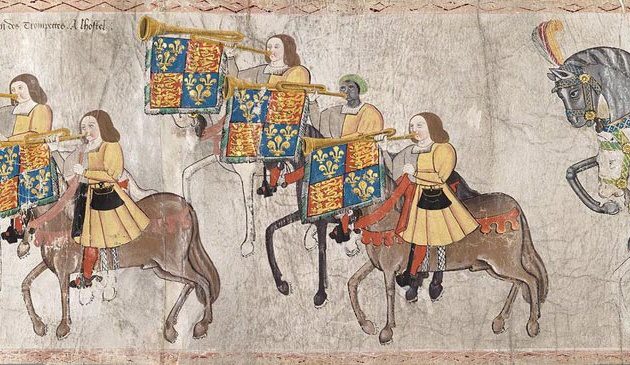Hyde Park – Playground of Tudor and Stuart monarchs

There had been a lodge at Hyde Park since at least the reign of Queen Anne, famous for serving cheesecake and syllabub. The building was white, with timber beams, latticed windows, and a gabled roof. The small stream that ran in front completed the charm and rural flavour. It was known by various names at different times, being the ‘Cheesecake House’, ‘Mince-Pie House’, ‘Cake House’ or ‘Price’s Refreshment Lodge’.
Each May Day was a special time in Hyde Park, when members of society visited the Ring in their carriages to see and be seen. John Evelyn wrote in his diary for 1st May 1661:
there was his Majesty and an innumerable appearance of gallants and rich coaches, being now a time of universal festivity and joy.
The highest and wealthiest members of society would have their carriage pulled by six grey Flanders mares, driven by coachmen, with footmen running in front. As Pepys advanced in his career as a civil servant, and he frequently mixed with the highest members of society, he often lamented how he was not able to afford his own carriage. Finally, he felt prosperous enough to purchase a coach and horses, just in time to ride in the park with his wife on May Day 1669.
And so anon we went alone through the town with our new Liverys of serge, and the horses’ manes and tails tied with red ribbon and the standards thus gilt with varnish and all clean, and green raynes, that people did mightily look upon us; and the truth is, I did not see any coach more pretty, or more gay, than ours all the day….
But it was not as pleasing as was hoped:
…though the park full of coaches; but dusty and windy and cold, and now and then a little dribbling rain; and what made it worst, there were so many hackney coaches as spoiled the sight of the gentlemen’s, and so we had little pleasure. But here was W. Batelier and his sister in a borrowed coach by themselves, and I took them and we to the Lodge, and at the door did give them a sullabub and other things, cost me 12s., and pretty merry; and so back to the coaches and there till the evening; and then home.
The King appointed James Hamilton as Keeper of the park. It was re-stocked with deer during that time (finally removed in 1831) and a perimeter brick wall built. As payment for his work Hamilton was allowed to create an orchard, although he had to provide the King with:
…one-half of the pippins or red streaks, either in apples or cider, as his Majesty may prefer, the produce of the trees he is authorised to plant in fifty-five acres of the north-west corner of the Park, on the Uxbridge Road.
In 1665, during the Great Plague, soldiers were quarantined in the park. Poor inhabitants from the City who could not escape to the countryside also set up camps there. Unfortunately, many anyway perished and were buried on the spot.
Hyde Park has often been used by monarchs for reviewing their troops and for military displays. The first known occasion is when in 1569 men “well appointed in armour, on horseback, and arrayed in green cloth and white [the Tudor livery]” were mustered for Queen Elizabeth. Trained bands, the Parliamentary forces from the City, exercised in the park during the Civil War. It was a great public spectacle when Charles II reviewed his Life Guards in 1662. During a visit by the Sultan of Morocco in 1682 there were displays by both British soldiers and Moorish horsemen.
Hyde Park was occasionally the location for settling disputes with a duel. A famous occasion was that between the Scottish Tory, the Duke of Hamilton, and the English Whig, Lord Charles Mohun, in November 1712. The swordfight was so savage that both died. There was a public outcry, Queen Anne spoke out against it, and duels were thereafter generally fought with pistols.
In the early 18th century Hyde Park was reduced in size when its western half was divided off to enlarge the garden of King George II and Queen Caroline at Kensington Palace. Hyde Park remained open to the public while Kensington Gardens became a private space for the royal family and their guests.
Sources include: Alicia Amherst ‘London’s Parks and Gardens’ (1907); Neville Braybrooke ‘London Green’ (1959); ‘The Queen’s London’ (1897); ‘The Diary of Samuel Pepys’; Edward Walford ‘Old & New London’ (1897); David Sullivan ‘The Westminster Corridor’.


